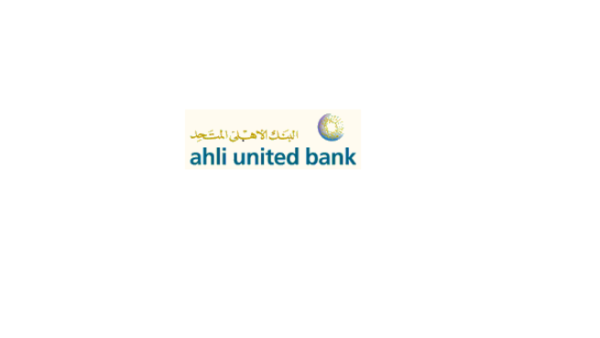Ahli United Bank B.S.C. reports a H1/2015 profit of US$ 278.4 million

Ahli United Bank B.S.C. (AUB) reported a net profit attributable to its equity shareholders of US$ 278.4 million for the half year ended 30 June 2015. The net profit reflected an increase of 6.1% in H1/2015 as compared to US$ 262.5 million achieved in H1/2014. The Q2/2015 net profit achieved was US$ 131.2 million, a 4.2% increase over the Q2/2014 reported profit of US$ 125.9 million. The Basic Earnings per Share in H1/2015 were US 4.3 cents, compared to US 4.2 cents in H1/2014.
The operating results of AUB were primarily driven by the growth in its core operating earnings across its major lines of business and markets, despite continuing sluggish economic trends in first half of year 2015 both in regional and European markets. Net interest income grew by 2.6% from US$ 381.7 million to US$ 391.7 million, while fee income grew by 8.4% from US$ 78.5 million to US$ 85.1 million. The cost income ratio stood at 28.8% (YTD H1 / 2014: 28.5%) reflecting the continuing drive to focus on an intelligent spend approach.
Prudent risk management and monitoring sustained its asset quality with the non-performing loans ratio standing unchanged at 2.0% (31 December 2014: 2.0%) while the specific provision coverage ratio was 81.0% (31 December 2014: 83.8%). Total provision coverage ratio, inclusive of collective impairment provisions, rose to 160.5% as at 30 June 2015 (31 December 2014: 159.4%).
The Group’s Return on Average Equity (ROAE) for H1/2015 was maintained at 16.7%, similar to H1/14. Return on Average Assets was higher at 1.8% for H1/2015 (H1/2014: 1.7%).
Mr. Hamad Al-Humaidhi, AUB Chairman, commented: “AUB’s strong performance for the first half of 2015 against the backdrop of weak regional economic activity and continuing international uncertainty is very satisfactory. The Bank successfully completed a US$ 400 million issue of Additional Tier 1 Perpetual Basel III Compliant Capital Securities in April 2015 at a very competitive pricing. This represents an important step forward in terms of the evolution and diversification of the Group’s capital structure”.
“The strong results for H1/2015 represent clear testimony of AUB’s well-managed business model based on diversification and cross border flows and of the success of its selective growth initiatives to increase operating income and mitigate risk challenges in its target markets.” added Mr. Al-Humaidhi.
Background Information
Ahli United Bank
Ahli United Bank BSC (AUB) is a full fledged commercial and investment banking group providing wealth management, retail, corporate, treasury, offshore and private banking services.
The Group's businesses consist of the operations in Bahrain, a wholly owned subsidiary in the UK and associates in Kuwait, Qatar, Oman, Egypt and Iraq. In Kuwait, AUB has an effective holding of 75% in the Bank of Kuwait and The Middle East while in Qatar, AUB has a 40% stake in Ahli Bank QSC. In Oman, AUB has a 35% stake in Ahli Bank SAOG while in Iraq AUB has a 49% stake in the Commercial Bank of Iraq. In Egypt, AUB, its associate banks and other Gulf financial institutions together hold an 89.3% stake in Ahli United Bank SAE. Apart from these banks, AUB has a nominal stake of 75% in KMEFIC, a brokerage, asset management and corporate finance company based in Kuwait with operations around the Arabian Gulf.
Overall, the AUB Group, through its subsidiaries and associates, operates through a network of 93 branch offices and employs over 3,000 people.
AUB’s stated mission is to create an unrivalled ability to meet customer needs, provide fulfillment and development for staff and to deliver outstanding shareholder value. AUB’s strategy is to expand through both organic growth and acquisition in order to act as a ‘multifaceted financial bridge’ between the international financial markets and its Gulf clients. It has sought to establish an operating presence in each of the Pan-GCC countries with a targeted 10% - 20% market share. To this end, AUB continues to develop and invest to increase its ability to acquire new businesses and rapidly integrate them with the bank’s systems. This development has helped accelerate progress in the delivery of financial services and penetration into targeted geographical markets.






